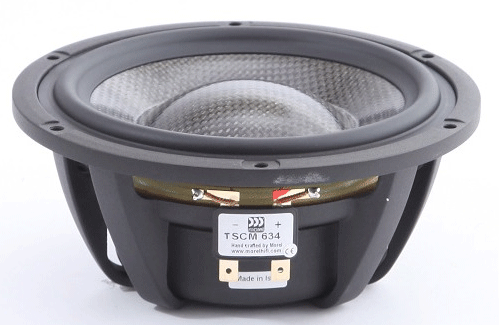Hi,
I was looking at the Philharmonic line of speakers.
In their BMR Monitor Speaker (
https://philharmonicaudio.com/products/bmr-monitor?variant=44484954554612)
Its a three way w a tweeter, 2" BMR and then a woofer. (6" SB Accoustic)
I'm trying to understand why they have the BMR where the range of the tweeter and the woofer could potentially be enough.
This also seems true w the other speakers that they offer.
I guess it goes down to driver choices... but what's the advantage of a 3 way where the mid mostly overlaps the woofer and the tweeter.
They allude to it in their marketing, and they are not making things up.

Matching the dispersion of a tweeter to the woofer in a 2-way is almost always going to be a huge challenge.
Consider the
Verdant Audio Bambusa MG-1:
It simple 2-way with top-shelf drivers from ~25 years ago, still good to this day. The tweeter
is isn’t mounted in a wave-guide so you get the typical dispersion of a 1" dome. The woofer is magnesium allow and has great passband properties but has enormous breakup modes above 4kHz.
It has large directivity mismatch between the woofer and the tweeter at the crossover, which leads to a depression in the midrange response that will not readily respond to EQ.
The resulting in-room response will always have a dip, even if you use DSP to attempt to flatten the response.
The directivity mismatch manifests in many in-room artifacts:
Imaging, the often cited benefit of a 2-way, isn't good with these types of frequency and reflection inconsistencies...
I used these drivers for years, mostly in a DIY speaker called Thor, which make up for some of the issues but trade for a whole set of new issues...
I repurposed some into a very
similar speaker to the Verdant (totally unknown to me!!!). My measurements with a DSP crossover show the same directivity mismatch as the Verdant.
Same in-room response error:
I have changed many things in the DSP crossover since then, and have much better directivity match, but am running the crossover very low, too low for anything but desktop/workstation speaker use where I only run at low power. I also adjusted the Q of the passive notch to flatten the huge out of band notch the woofer has, I now both tame the peak but also flatten the response. Here are overly-smoothed

graphs of the woofer peak, and passive vs. DSP filter of the peak from my original post:
I am happy with the performance now, it's about as good as a small standard 2-way desktop can sound without some innovations that are beyond me!
I do have a floor standing 2-way that avoids this problem by using an acoustic lens and crossing over the woofer to the Compression Driver at 780Hz. But this is not the norm.
I have thought about updating the build-thread with new measurements, but hope you get the idea that the drivers' directivities depend on frequency and effective radiator size, and you usually will sacrifice some in-room performance if these are not matched. It turns out that 3-way allow much better directivity matching. And allow you to keep the individual drivers away from problematic resonant peaks. Of course, they are more difficult to design, build, and tweak. DSP filters really helps since passive crossovers in a 3-way do require way more understanding.
Some may not care about the tradeoffs in a 2-way, I have lots of 2-way speakers, some sound pretty good! But I find that speakers with poorly controlled directivity in my imperfect listening room really degrade imaging, and can make speakers very track-dependent on how they sound, while emphasizing parts and artifacts in recordings oddly.
Edit: typo; tweeter is NOT loaded in a waveguide!!!

